Issue 8, August 4, 2022
Chicory
Chicory (Cichorium intybus) is an erect perennial growing from a large, fleshy, dark brown taproot. It has a rosette of basal leaves and tall, wiry stems that are sparsely leaved and branching. Chicory grows to about three to four feet tall. It is especially noticeable this time of year when in full bloom and can be found easily statewide along many Illinois roadsides.
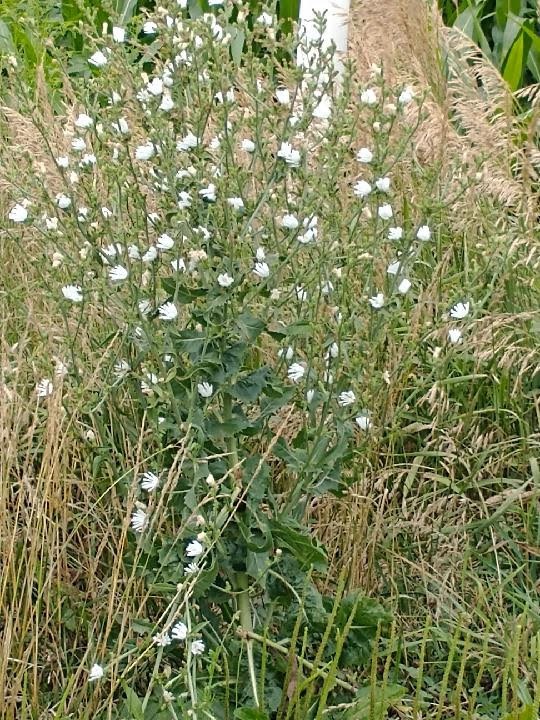
Less commonly seen white Chicory flowers along a roadside, Scott Wiesbrook, University of Illinois
The basal leaves are formed early in the growing season. They are lobed, arranged in a rosette, 6-8 inches long, and are commonly confused with that of dandelion. However, dandelion leaves will always point toward the leaf base and Chicory leaves will not always. Also, Chicory leaves are rougher to the touch. These basal leaves may not be present late in the season.
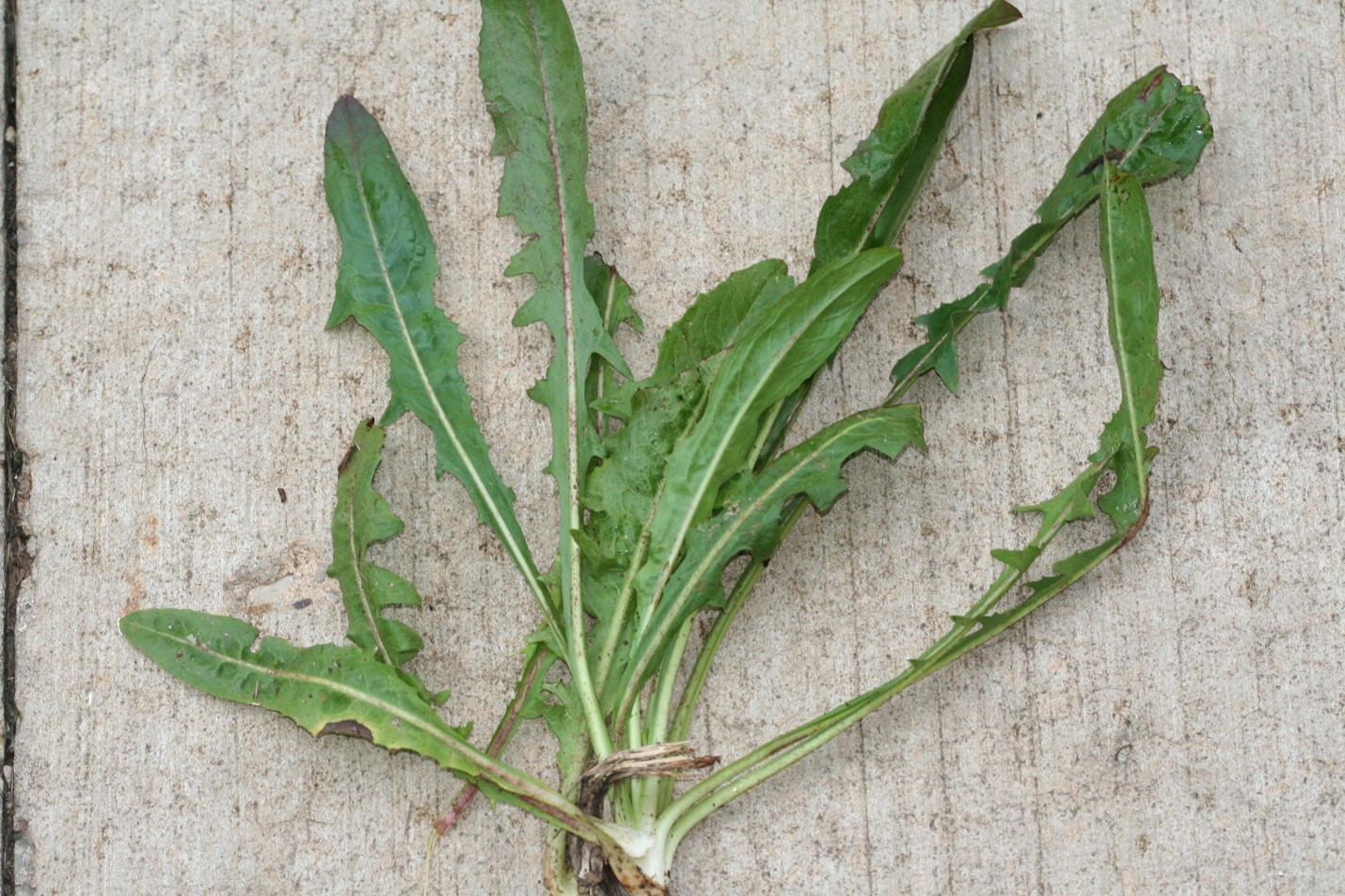
Chicory basal leaves, Michelle Wiesbrook, University of Illinois
The stems, produced later in the growing season, also have leaves which are smaller and not as deeply lobed as the basal leaves. They are alternate on the stem, lanceolate in shape and rough on the upper surface. The leaf base clasps the stem. The leaf margins are coarsely toothed to pinnatifid. The stems are typically sparsely leaved, wiry, and branching. The flowering stems are erect, hollow, and round. Both the stems and leaves exude a milky sap when cut.
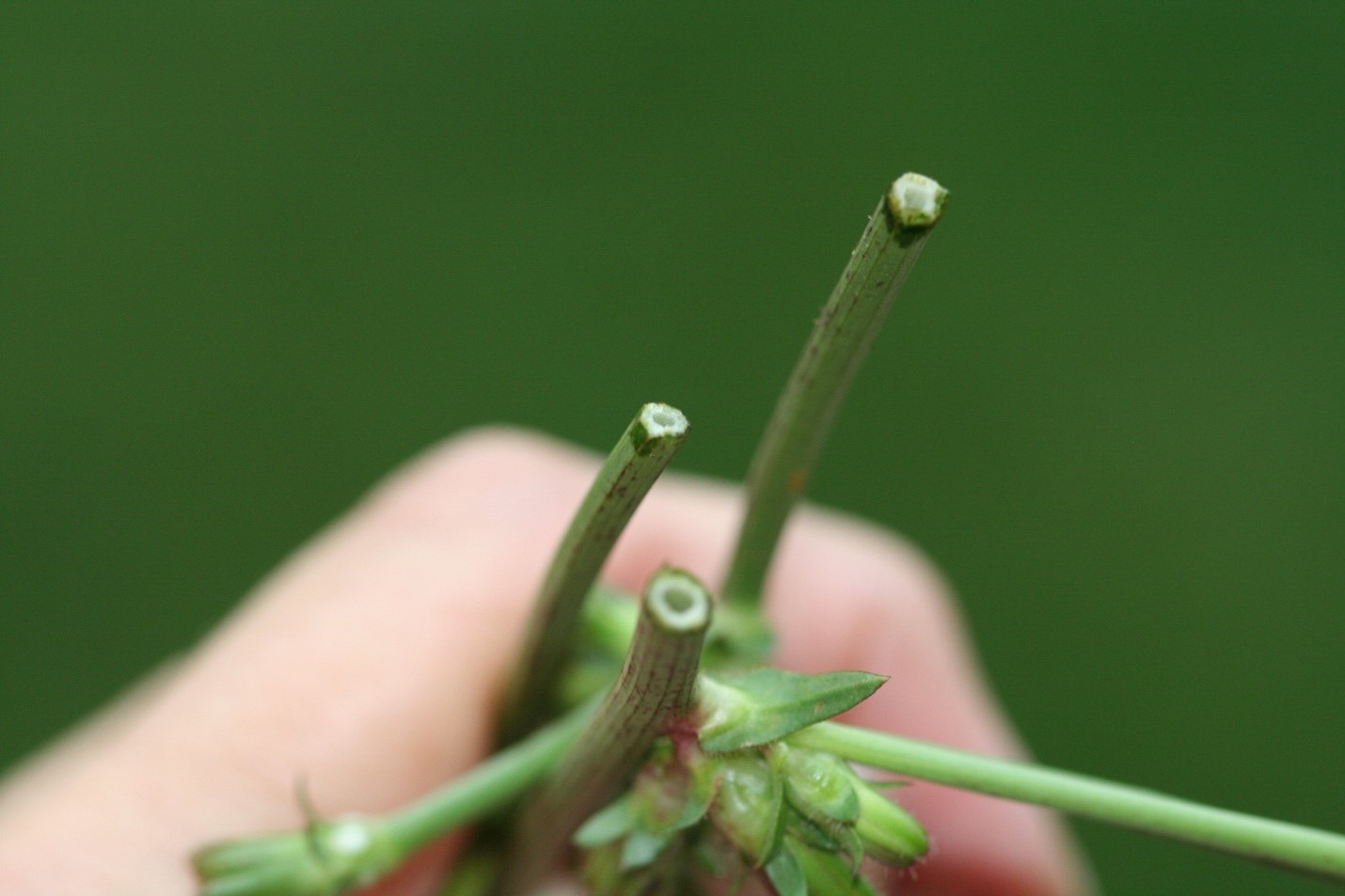
Chicory hollow stems, Michelle Wiesbrook, University of Illinois
The flowers are ray flowers with each being square-tipped and fringed. Chicory has no disk flowers. Flowers are stalkless and typically bright blue but may be pink, purple, or white. They are about 1 inch wide, appearing June through October. Flowers are commonly open in the morning hours but closed in the afternoon making them less noticeable during that time. Reproduction is by seed.
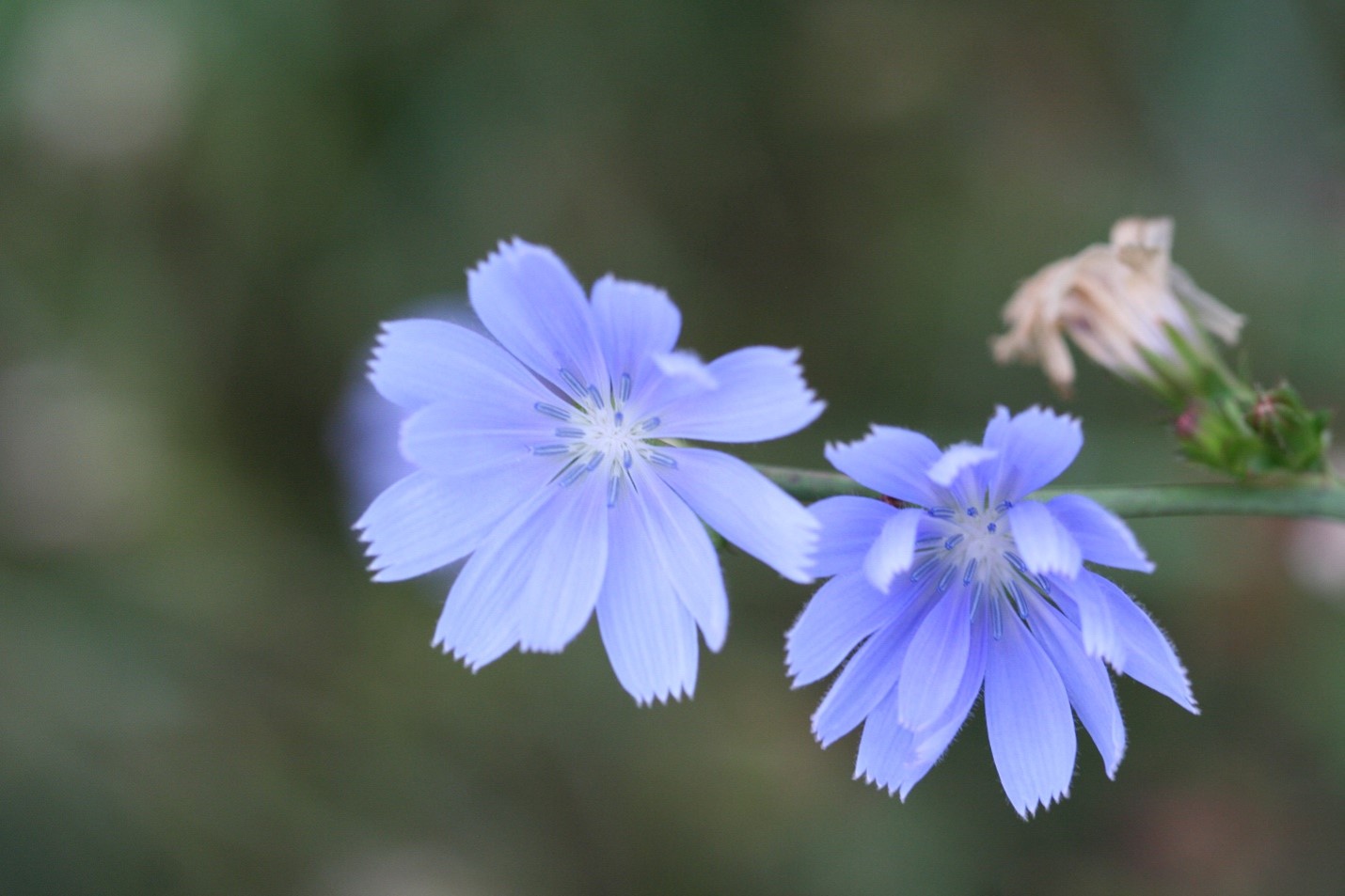
Chicory flowers, Michelle Wiesbrook, University of Illinois
This native of Europe was brought to the United States by early settlers. It has been grown as a vegetable and as a substitute for coffee. Chicory can be found in lawns, meadows, and pastures and along roadsides and railroads. It thrives in dry, low fertility soils. It can be a problem in low maintenance turf. The stalks are rigid and can resist mowing. In frequently mowed lawns, Chicory may grow prostrate with flowering stems unaffected by mower blades.
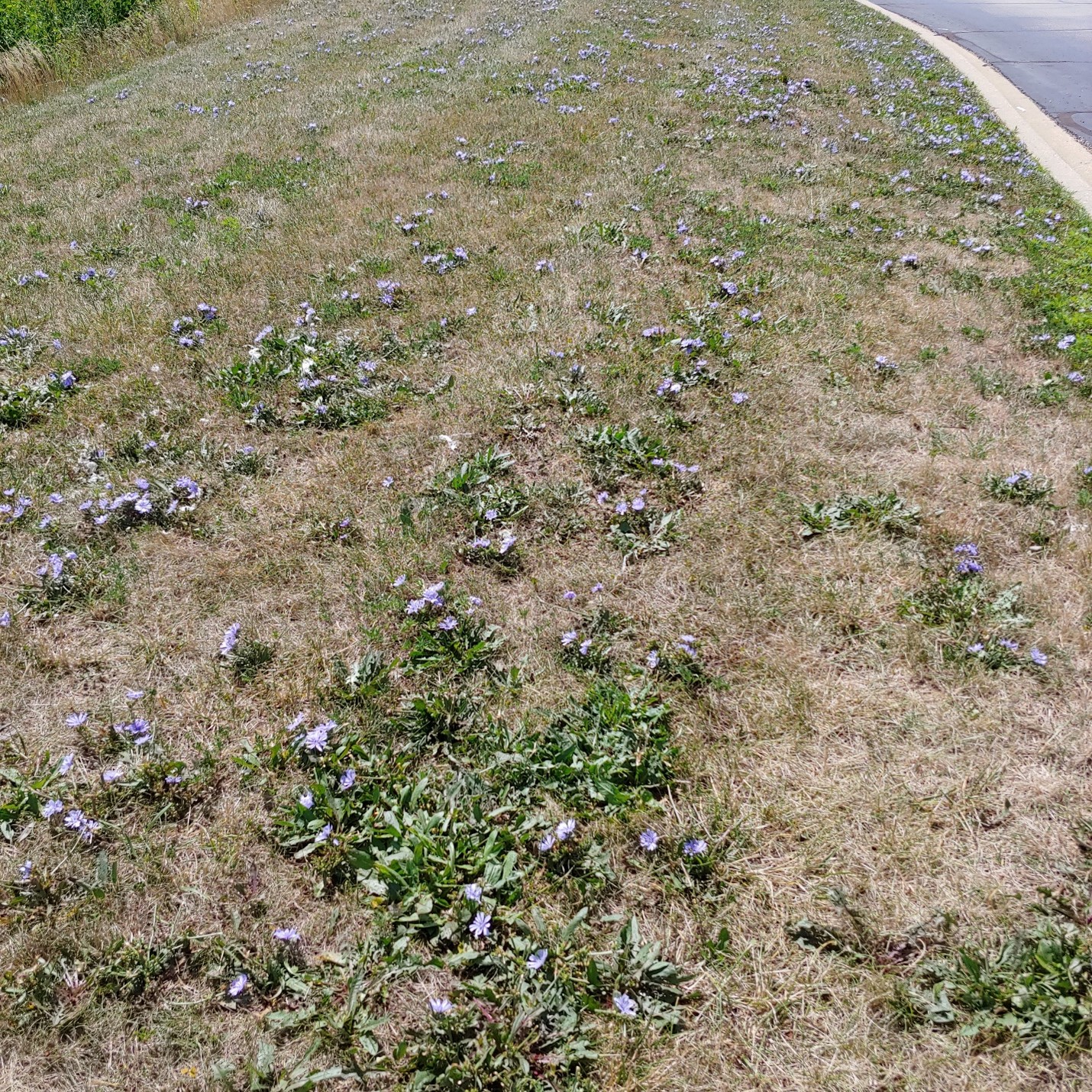
Turf with large Chicory population, Michelle Wiesbrook, University of Illinois
To help eliminate Chicory from a lawn, use practices that would encourage the lawn to be healthy and thick. Proper fertilization and irrigation practices can result in turfgrass that is better able to compete with Chicory. Mowing higher can help to shade this weed. Chicory may be removed by hand but be sure to remove all of the root. This method may work well for smaller gardens and areas. For larger areas, use of a herbicide may be necessary. For turf areas, a 3-way broadleaf killer may be your best option. Reportedly, glyphosate does not do well on this species. Be sure to read and follow all product label directions.
Author:
Michelle Wiesbrook